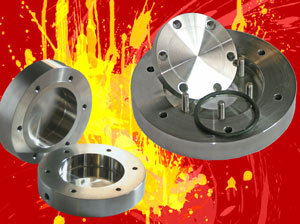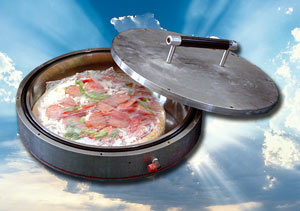

Standard and specialised testing chambers, rigs or sample holders
Because the simples and components that need to be tested for vapour permeability vary enormously in size, shape, edge type and physical characteristics we offer an equally wide range of both standard and specialised testing chambers, rigs / sample holders to meet differing testing needs across many testing and standards platforms.
 Investing in additional testing chambers can, in some instances, substantially increase the diversity and types of samples and sizes that can be measured without the need for an entirely new or dedicated vapour permeability meter.
Investing in additional testing chambers can, in some instances, substantially increase the diversity and types of samples and sizes that can be measured without the need for an entirely new or dedicated vapour permeability meter.
Different rigs or chambers are need to test samples and enclosures ranging from flat samples of differing materials through to coatings, complete wall structures, O-rings, mastics and enclosures from drug capsules to cases for housing underground electronic equipment.
Sometimes we need to produce specific new rigs for unusual samples - and our engineering and laboratory departments are highly experienced at designing and producing these.
Generally, the testing process involves applying conditions of high vapour, partial pressure humidity and a pre-set temperature on one side of the material, and measuring the amount of vapour that passes through the sample. Modern instrumental techniques, such as vapour transmission rate (VTR) meters, rely on sensors that give extremely precise results, sometimes in as little as half an hour. Some equipment and techniques are also designed to determine any extremely low leakage rates, which are unrelated to diffusion processes. More information on the many sensor types and technologies used can be found either here or in the links below.
 Universal sensors: mass spectrometer, gas chromatography, pressure measurements and semiconductor
Universal sensors: mass spectrometer, gas chromatography, pressure measurements and semiconductor
Water vapour sensors: electrolytic, infrared, capacitive, impedance
Helium sensors: thermal conductivity
Hydrogen sensors: thermal conductivity,flame Ionization, catalytic combustion
Hydrocarbon sensors: flame Ionization, catalytic combustion, infrared, photoionization
Solvent sensors: flame Ionization, catalytic combustion, infrared, photoionization
Oxygen sensors: ZrO2, paramagnetic, electrochemical, coulometric
Carbon dioxide: thermal conductivity, infrared.
One caveat of warning is that there are a number of different ways of expressing the barrier to water and other vapours, and although each industry tends to use a standard set of units! Furthermore, the humidity differential and temperature at which the measurement is made has a significant effect on the result. Quoting permeability rates without specifying these conditions is almost meaningless.
Some of the many sample types we can test in our permeability testing laboratory
Permeability is a measure of the rate at which a vapour (often water vapour, but we can test virtually any gas) can flow through a material. Different techniques can give widely varying results so it is crucial that any testing facility fully understands the science and the specific application.